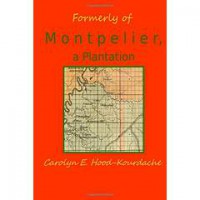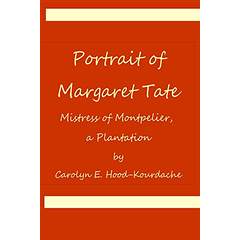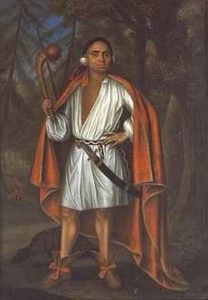Portrait of Margaret Tate, Mistress of Montpelier, a Plantation
In Portrait of Margaret Tate, Mistress of Montpelier, a Plantation, a biographical and historical sketch of the
daughter and heir of Choctaw metis, Reuben Dyer, is presented.
Reuben Dyer died before the events of August 30, 1813. In fact, he was not enumerated in the 1810 Mississippi Territorial Census. His widow, Mary Dyer, on the other hand, was killed at Fort Mims. Her son-in-law, [William] Theophilus Powell, represented her estate, as reported in Lackey’s Frontier Claims in the Lower South.
 Massacre at Fort Mimms, 1813. Courtesy of the New York Public Library, Digital Collections.
Massacre at Fort Mimms, 1813. Courtesy of the New York Public Library, Digital Collections.
Margaret Dyer’s Lineage
Richard Cussins = Choctaw maiden Dyer = Choctaw maiden
| |
Mary Cussins = Reuben Dyer
___________|________________
| |
Margaret Dyer Martha [Polly] Dyer
= 1. William Theophilus Powell = John Weatherford
___________|___________________________________
| | |
Mary D. Wm. Th. Jr. Martha
= David = Mary = Jason
Moniac Bryant Staples
= 2. David Tate
|
Josephine Bonaparte Tate
= James Denny Dreisbach
Powell’s three children and heirs were Mary Delphine, Martha, and William Theophilus Powell.i Dyer and David Tate had only one child together, Josephine Bonaparte Tate [James D. Dreisbach]. Although AmerIndian, Dyer responded to interrogatories at the Weatherford v. Weatherford, et al. trial, that she did not speak the Creek language, nor was she familiar with Creek lore and culture relating to marriage.ii Considering that she was Choctaw and not Creek, her responses were plausibly truthful. However, when we consider her treatment of Flora, we note that she was disengenuous.
According to George Stiggins, it was customary for Creek men to marry the female relative of their deceased wife. Tate legally married his second wife or concubine, Penny Coleman, another EuroIndian, in June of 1814, at Mobile, within a year of Mary Louise Randon’s death at Fort Mims. Unavailable Margaret Dyer-Powell, did not spark his attentions until well after the death of Coleman in 1817, the wartime death of William Powell, and the purchase of another concubine, “Flora,” in 1819. It was also customary to have multiple “wives.”
iTheophilus Powell, Last Will and Testament, May 17, 1816, Monroe County, Alabama, Orphans Court Record of Orders Book No. 1. 1816-1821. FHL# 1548209.
iiParedes, J. Anthony and Knight, Red Eagle’s Children, Weatherford vs. Weatherford, et al. (Contemporary American Indians) Hardcover – October 16, 2012.
© 2016 – 2022 All rights reserved.
McGillivray addressed the naivete of Creek chiefs – “David Tate : Origins”
Four years after the Treaty of Paris, the Lower Creeks met in council – April 10, 1787. McGillivray addressed the naivete of Creek chiefs, while another group was held hostage by the Americans, to “run the line, as agreed,” with the following remarks:
It is not so long since, but you must remember how one of these Powers made violent efforts even upon us, the white people, their children. But to tell you what is done by others of them upon people of your color, towards the mid-day sun, would fill you with horror. Ought we not, therefore, to grasp one another with a strong arm of friendship, the more easily to repel these foreigners?i [emphasis added]
Evidently, McGillivray was sensitive to the race war waged by the colonists against Indians.
After years of tit-for-tat skirmishes and depredations, the United States decided to sue for peace. Commissioners were sent into Creek country to seduce McGillivray to agree to a cessation of hostilities. In 1790, McGillivray took a coterie of Creeks to New York, the seat of U.S. government, to negotiate a treaty.ii That exclusive group of individuals included his nephews, heirs to his wealth and political position. In particular, David Tate, son of his maternal half sister, Sehoy, accompanied him. Ten-year-old Tate was impressed with the pomp and circumstance accorded his first trip outside the Creek Nation. McGillivray was feted at the personal residence of Henry Knox, Secretary of War. At the conclusion of negotiations, young David was left in the care of Knox.
. . .
David Tate was educated at Philadelphia under a secret article of the 1790 Treaty.
i“The Library of Congress,” A Century of Lawmaking for a New Nation: U.S. Congressional Documents and Debates, 1774 – 1875,” American State Papers, Senate, 1st Congress, 1st Session , Indian Affairs, Vol. 1, page 22. http://memory.loc.gov/cgi-bin/ampage?collId=llsp&fileName=007/llsp007.db&recNum=23 (Accessed: May 5, 2016).
iiLinda Langley, “The Tribal Identity of Alexander McGillivray: A Review of the Historical And Ethnographic Data, Louisiana History” The Journal of the Louisiana Historical Association, Vol. 46, No. 2 (Spring, 2005), pp. 231-239.
iii“An open door policy,” HenryKnoxMuseum.org http://www.knoxmuseum.org/henry-knox/the-house/ (Accessed: May 5, 2016).
ivLawrence M. Hauptman and Heriberto Dixon, “Cadet David Moniac: A Creek Indian’s Schooling at West Point, 1817-1822, Proceedings of the American Philosophical Society, Vol. 152, No. 3, September 2008.pg. 330.
©2016-2020 All rights reserved.
William Weatherford’s big brother David Tate was Fort Mims escapee
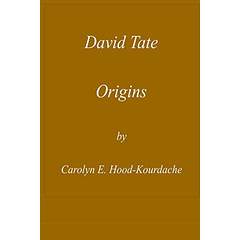 Welcome to my genealogy Blog! Welcome cousins to my research conducted over the past 20 years regarding our common ancestors in Alabama.
Welcome to my genealogy Blog! Welcome cousins to my research conducted over the past 20 years regarding our common ancestors in Alabama.
This site will dispel misconceptions touted as truths about remnant Native Americans in Alabama.
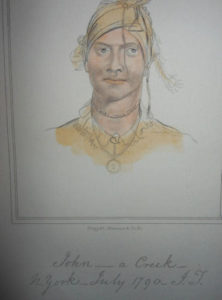
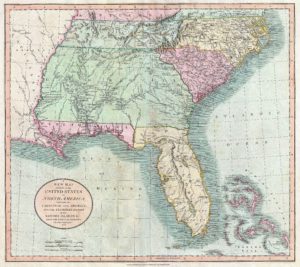
After the Removal Act of 1830.
Remnant “friendly” Creek Indians remained in Alabama. They fought to retain land reservations issued by the United States Government, under the Treaty of Fort Jackson, at the close of the Creek Civil War of 1813 – 1814.
All lands p reviously owned and occupied by the Creeks, prior to the outbreak of hostilities, were exempt from seizure. But, General Andrew Jackson sought the confiscation of all Indian lands, to the detriment of any “friendly” persuasions to the contrary.
reviously owned and occupied by the Creeks, prior to the outbreak of hostilities, were exempt from seizure. But, General Andrew Jackson sought the confiscation of all Indian lands, to the detriment of any “friendly” persuasions to the contrary.
One of those so-called “friendly” Creeks was David Tate, our common ancestor. Tate was described a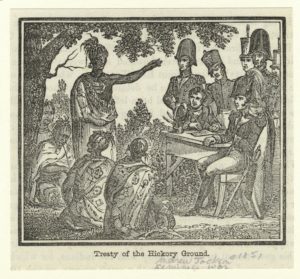 s the first among the “friendlies.” A leader and chieftain, his was the unwelcome task of contesting the Treaty until his death, in 1829. Tate was a wealthy landowner and slaveholder.
s the first among the “friendlies.” A leader and chieftain, his was the unwelcome task of contesting the Treaty until his death, in 1829. Tate was a wealthy landowner and slaveholder.
Interestingly, Tate was the older brother of William Weatherford, the Red Eagle of lore. Initially, both were opposed during the Red Stick War, and though they were labeled adversaries, never allowed politics to come between them; even after the slaughter of Tate’s first wife, Mary Louise Randon, and nearly her entire family, at Fort Mims. Their brotherly affection remained intact.
Yes, Virginia, you do have Indian blood. And, no, Virginia, they weren’t “savages.”
Do you share common Scotch, Irish, English, Creek, Choctaw, Chickasaw, or Cherokee ancestry? Let’s swap information.
© 2016 – 2020
